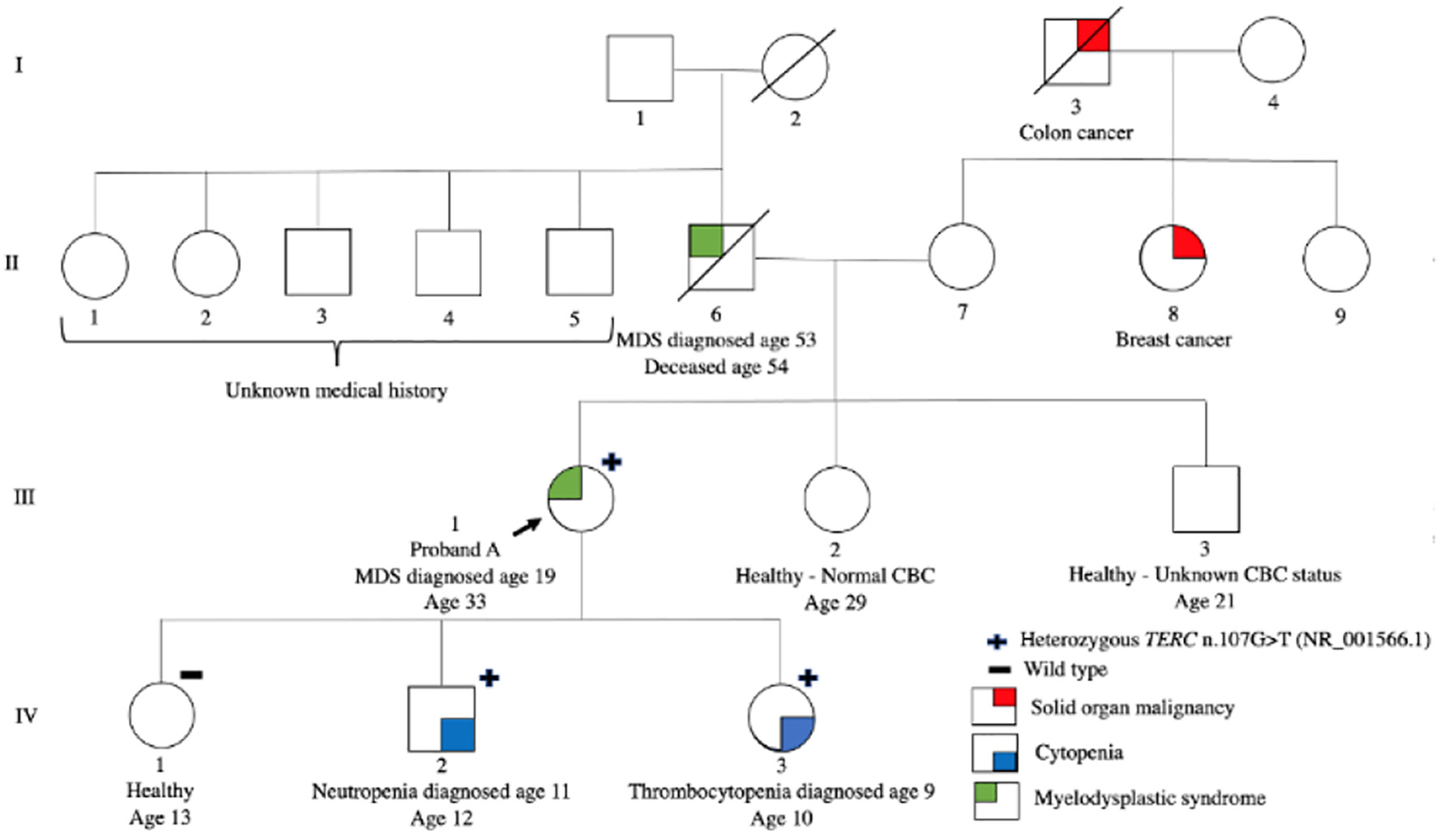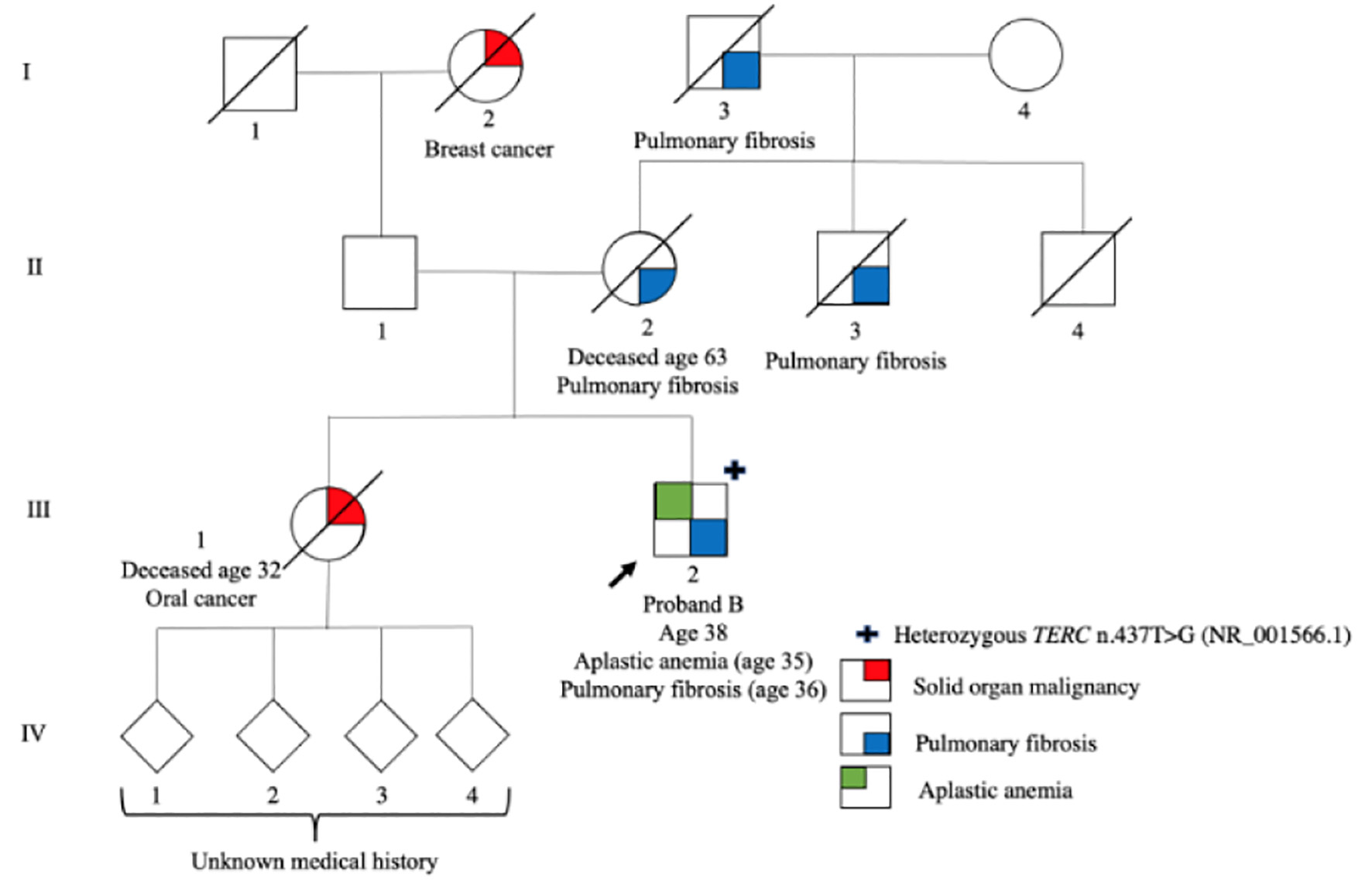| Proband A (A III-1) | Early graying of hair, myelodysplastic syndrome | 19 | HGB 82 g/L (MCV 113), PLT 59 × 109/L, WBC 8.9 × 109/L (ANC 6.37) | Multilineage dysplasia, 1% blasts, normal cytogenetics | TL less than the first percentile for age for total lymphocytes and all lymphocyte subsets | TERC n.107G>T (heterozygous) |
| Proband A’s eldest daughter (A IV-1) | None | N/A | HGB 149 g/L, PLT 245 × 109/L, WBC 6.21 × 109/L | Not performed | TL within normal limits | Wild type |
| Proband A’s son (A IV-2) | None | 11 | HGB 128 g/L (MCV 95.6), PLT 160 × 109/L, WBC 3.42 × 109/L (ANC 1.54) | Overall unremarkable including no dysplasia, no increase in blasts and normal cytogenetics | TL less than the first percentile for age for total lymphocytes and all lymphocyte subsets | TERC n.107G>T (heterozygous) |
| Proband A’s youngest daughter (A IV-3) | Pre-term birth, dental carries | 10 | HGB 128 g/L (MCV 101.1), PLT 35 × 109/L, WBC 4.36 × 109/L (ANC 2.03) | Rare dysplastic erythroblasts and megakaryocytes but overall, no significant abnormality | TL less than the first percentile for age for total lymphocytes and all lymphocyte subsets | TERC n.107G>T (heterozygous) |
| Proband B (B III-2) | Pulmonary fibrosis, premature graying of hair | 35 (aplastic anemia); 36 (pulmonary fibrosis) | HGB 124 g/L (MCV 104.5), PLT 95 × 109/L, WBC 5.01 × 109/L (ANC 3.52) | Markedly hypocellular marrow (20-30% cellularity) with decrease trilineage hematopoiesis and no dysplastic changes, no increase in blasts | Length less than the first percentile for age for total lymphocytes and all lymphocyte subsets | TERC n.437T>G (heterozygous) |

